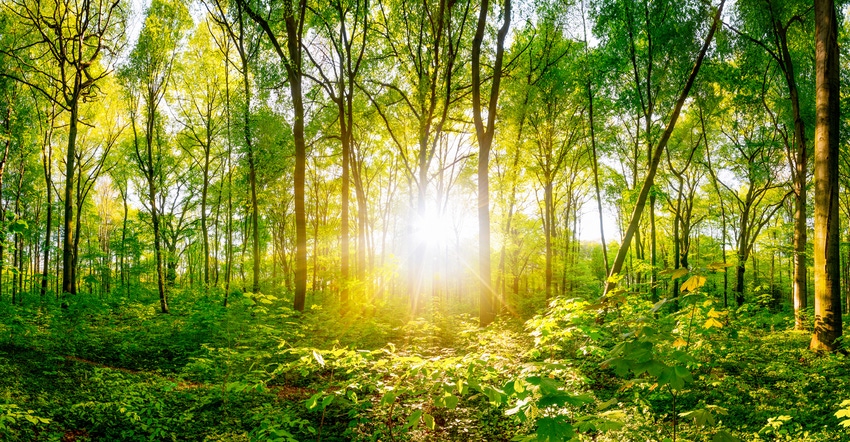March 19, 2018

The exotic invasive emerald ash borer is in Illinois, and it’s already leaving its mark. Now, let’s talk about some management options to protect your ash resource.
Based on published research, there are five common recognized EAB management strategies:
1. Remove all dying ash trees.
2. Proactively remove all ash trees over time to reduce annual cost.
3. Protect only legacy ash trees, or those healthy trees of historical or significant landscape value.
4. Protect a substantial portion (less than 50%) of healthy ash trees.
5. Protect most (more than 50%) of healthy ash trees.
All of these approaches come with pluses and minuses, but remember, EAB will eventually kill your ash tree if it is not chemically protected.
The first two tactics are pretty clear. You will incur costs over a compressed time frame. Management tactics 3, 4 and 5 require more planning and decision-making. The important thing is to select the practice that works best for you and your ash resource.
University research studies have shown that insecticides can be effective in protecting trees from EAB, and no, you do not need to treat the tree for its entire life.
The most common recommended products include the active ingredients of imidacloprid, dinotefuran and emamectin benzoate, and all are systemic. Imidacloprid and dinotefuran are neonicotinoid class insecticides and must be applied annually. They can be applied either as a soil drench, soil injection, trunk injection and/or basal trunk spray, depending on the product and label requirements. They have been shown to effectively protect trees up to 15 inches in diameter at breast height. For trees larger than that, it is recommended to have a professional treat your tree.
For larger trees, a trunk injection of Tree-Age (emamectin benzoate), which is a restricted product and must be applied by a licensed pesticide applicator, has shown to be highly effective. Also, a higher rate of imidacloprid applied by a commercial arborist can be effective. Soil injection or drench treatments can be applied from April to June or from September to November (spring applications seem to work better). Trunk injections can be conducted from May to August. One advantage of using Tree-Age is that it’s effective for two years, so you only need to treat your tree every third year.
But for how long?
A major concern people have is how long they will have to treat the tree. Studies in Michigan, Indiana and Ohio show it takes about 10 years for the EAB “wave” to pass through an area. In other words, the time from when EAB is detected until populations begin to decline to low levels is about a decade. Yes, a decade is a long time. Consider all the services your ash tree provides versus the cost of removal and replacement — we’re talking about shade, windbreaks, wildlife habitat, interception of rainfall and aesthetics.
Now it is time to do a little math. Considering the cost of $40 to $50 per year to purchase and apply a homeowner product for a medium-sized tree compared to paying $600 to $1,000 to have that same tree removed and replaced, you could treat your tree for at least 12 to 15 years, well beyond the 10-year EAB wave. In addition, you have preserved and protected the aforementioned services that would take three to four decades to recover.
For larger trees, professionals quote treatment rates with Tree-Age at $8 to $10 per inch of diameter, so the cost for a 20-inch-diameter ash tree at $8 per inch is $160, and is good for two years. Treating your tree five times over a 10-year period would be $800, on the low end — about the same cost for removal and replanting.
Like any investment, you must look at the condition of the tree. Is it structurally sound, does it have good growth form, is it an asset to your property, and of course, is it worth the investment? If not, then removal and replacement might be the appropriate decision. Only you can make that decision.
Presently, insecticide is the only effective option for protecting ash trees. Biological control of EAB and the development of tolerant or resistant ash trees are being researched, but are years away. So before you start that chain saw, step back and look at your tree(s), do a little math, and consult with a certified arborist. Once you cut down a tree, there is no going back.
For additional information on insecticide products, whether to treat or not to treat, and trees for replanting, consult with your local Extension office, certified arborist or The Morton Arboretum.
Miller is a horticulture professor at Joliet Junior College and a senior research scientist in entomology at The Morton Arboretum in Lisle, Ill. Email your tree questions to him at [email protected].
About the Author(s)
You May Also Like




